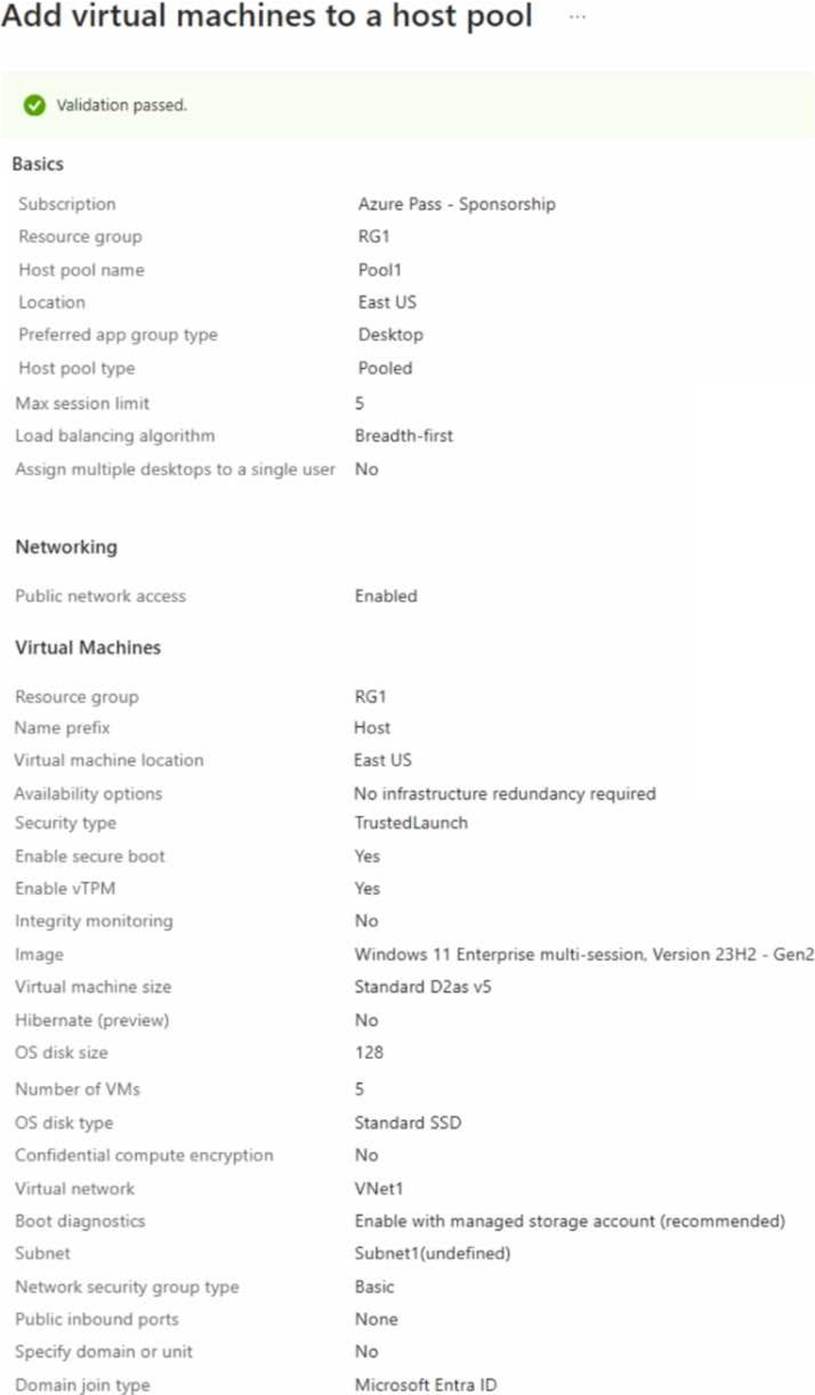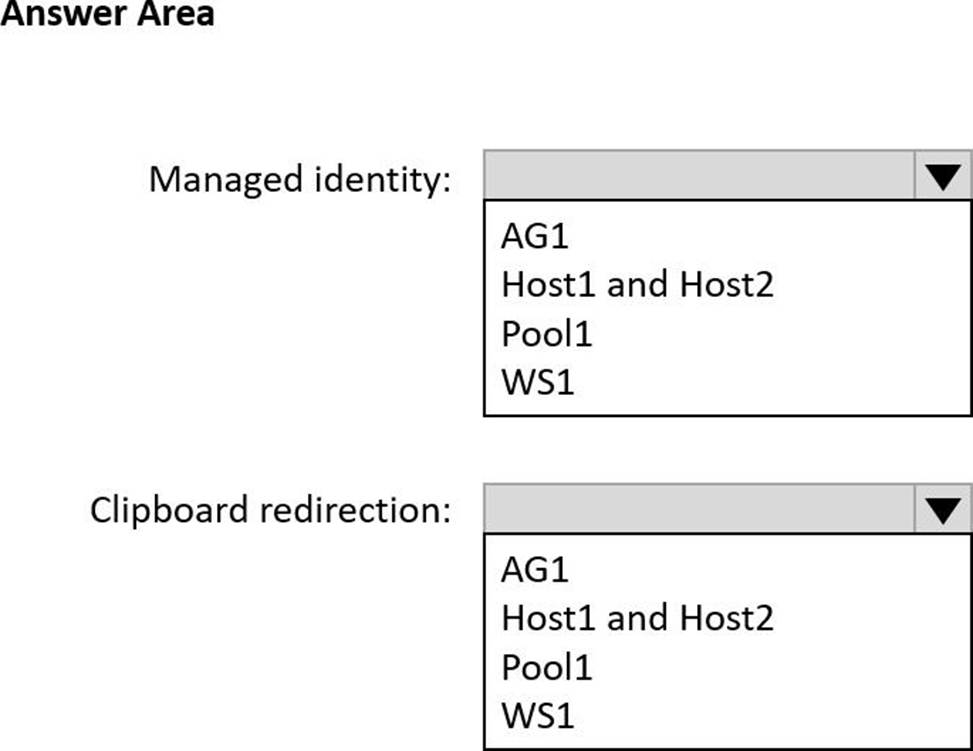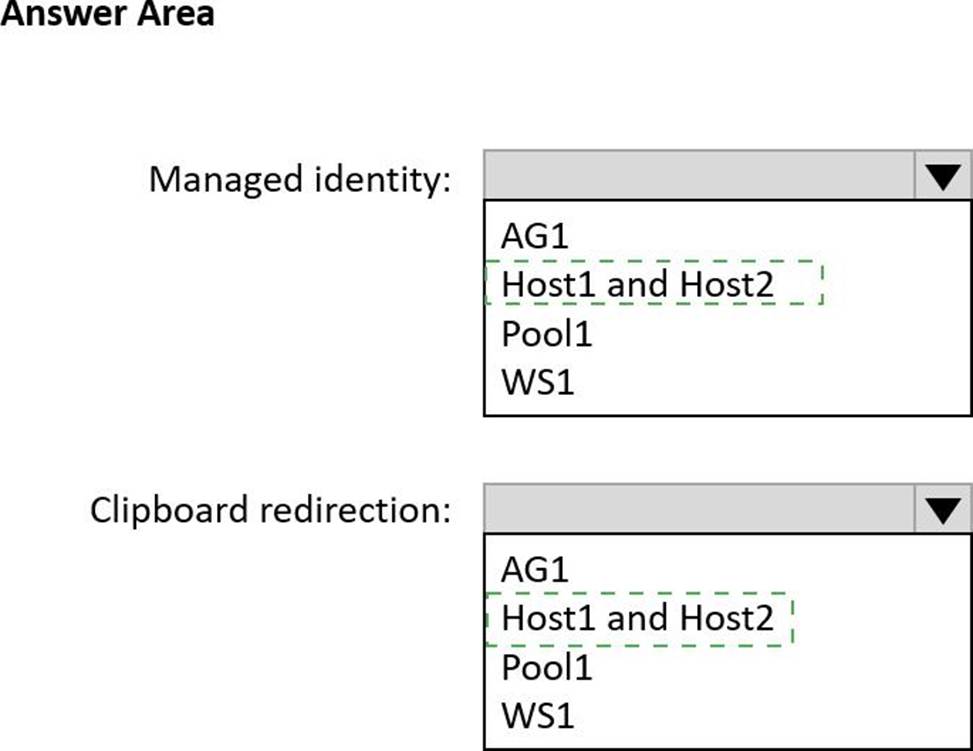Practice Free AZ-140 Exam Online Questions
Note: This question is part of a series of questions that present the same scenario. Each question in the series contains a unique solution that might meet the stated goals. Some question sets might have more than one correct solution, while others might not have a correct solution.
After you answer a question in this section, you will NOT be able to return to it. As a result, these questions will not appear in the review screen.
You have the following:
✑ A Microsoft 365 E5 tenant
✑ An on-premises Active Directory domain
✑ A hybrid Azure Active Directory (Azure AD) tenant
✑ An Azure Active Directory Domain Services (Azure AD DS) managed domain
✑ An Azure Virtual Desktop deployment
The Azure Virtual Desktop deployment contains personal desktops that are hybrid joined to the on-premises domain and enrolled in Microsoft Intune.
You need to configure the security settings for the Microsoft Edge browsers on the personal desktops.
Solution: You configure a configuration profile in Intune.
Does this meet the goal?
- A . Yes
- B . No
A
Explanation:
Reference: https://docs.microsoft.com/en-us/mem/intune/fundamentals/azure-virtual-desktop
You have an Azure Virtual Desktop personal host pool named Pool1 that contains 20 Azure AD-joined session hosts.
You need to ensure that only approved virtual machine extensions are installed on the Pool 1 session hosts. The solution must minimize administrative effort.
What should you use?
- A . Azure Resource Manager (ARM) templates
- B . Azure Policy
- C . Windows Admin Center
- D . Group Policy
Note: This question is part of a series of questions that present the same scenario. Each question in the series contains a unique solution that might meet the stated goals. Some question sets might have more than one correct solution, while others might not have a correct solution.
After you answer a question in this section, you will NOT be able to return to it. As a result, these questions will not appear in the review screen.
You have the following:
✑ A Microsoft 365 E5 tenant
✑ An on-premises Active Directory domain
✑ A hybrid Azure Active Directory (Azure AD) tenant
✑ An Azure Active Directory Domain Services (Azure AD DS) managed domain
✑ An Azure Virtual Desktop deployment
The Azure Virtual Desktop deployment contains personal desktops that are hybrid joined to the on-premises domain and enrolled in Microsoft Intune.
You need to configure the security settings for the Microsoft Edge browsers on the personal desktops.
Solution: You create and configure a Group Policy Object (GPO) in the on-premises domain.
Does this meet the goal?
- A . Yes
- B . No
A
Explanation:
Reference: https://www.compete366.com/blog-posts/eight-tips-on-how-to-manage-azure-virtual-desktop-avd/
You have a Azure Virtual Desktop deployment that contains multiple host pools.
You need to create a PowerShell script to sign users out of a specific session host before you perform a maintenance task.
Which PowerShell module should you load in the script?
- A . Az.Automation
- B . Az.COMputC
- C . Az.Maintenance
- D . Az.DektopVirtualization
D
Explanation:
Reference:
https://docs.microsoft.com/en-us/powershell/module/az.desktopvirtualization/?view=azps-6.6.0#desktopvirtualization
https://techgenix.com/logging-off-and-removing-wvd-user-sessions/
Note: This question is part of a series of questions that present the same scenario. Each question in the series contains a unique solution that might meet the stated goals. Some question sets might have more than one correct solution, while others might not have a correct solution.
After you answer a question in this section, you will NOT be able to return to it. As a result, these questions will not appear in the review screen.
You have an Azure Virtual Desktop host pool named Pool! that is integrated with a Microsoft Entra Domain Services managed domain. You need to configure idle session timeout settings for users that connect to the session hosts in Pool1.
Solution: From a Microsoft Entra joined computer, you modify the AADDC Users GPO settings.
Does this meet the goal?
- A . Yes
- B . No
HOTSPOT
You have an Azure Virtual Desktop deployment that contains a host pool named Pool1.
You are adding Microsoft Entra joined session hosts to Pool1 as shown in the following exhibit.



You have an Azure Virtual Desktop host pool.
You add a French language pack to each session host in the host pool.
Several days later, users report that English displays when they connect to Azure Virtual Desktop. After an investigation, you discover that the French language pack was removed, and the session hosts reverted to English.
You need to ensure that the French language pack is always available on the session hosts.
What should you do?
- A . Apply a Group Policy setting that blocks the cleanup of unused language packs.
- B . Apply a Group Policy setting to disable the Time & language settings.
- C . Configure the international settings on each host.
- D . Assign a default time zone on each host.
A
Explanation:
To ensure that the French language pack is always available on the session hosts in Azure Virtual Desktop, and to prevent it from being removed, you should:
You have an Azure Virtual Desktop deployment that contains a host pool named Pooll Pool1 contains two session hosts.
You create a new virtual machine named Host3 that runs Windows 11.
You need to add Host3 as a third session host to Pool1.
What should you do first?
- A . Generate a registration key.
- B . Assign a scaling plan to Pool1.
- C . Deallocate the existing session hosts.
- D . Generate a certificate for Host3.
You need to configure the device redirection settings. The solution must meet the technical requirements.
Where should you configure the settings?
- A . Workspace1
- B . MontrealUsers
- C . Group1
- D . Pool1
HOTSPOT
You have an Azure Virtual Desktop deployment that contains the resources shown in the following table.

You need to perform the following configurations:
• Enable a managed identity for App1.
• Enable Clipboard redirection for App1.
On which resources should you perform the configurations? To answer, select the appropriate options in the answer area. NOTE: Each correct selection is worth one point.


